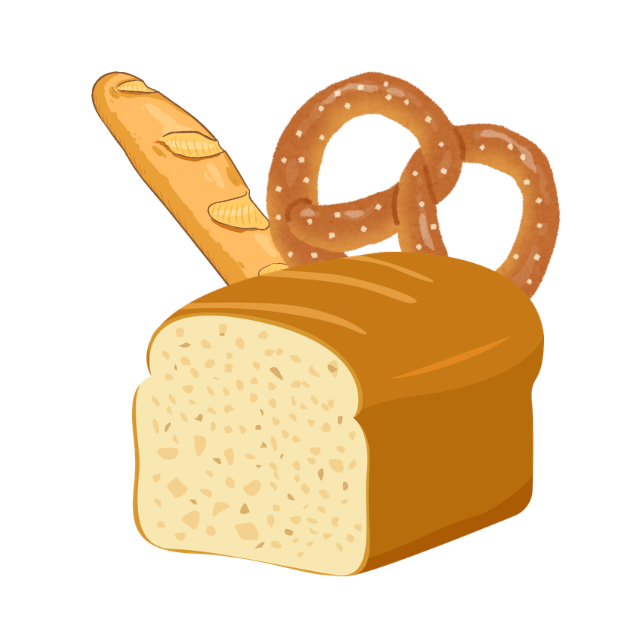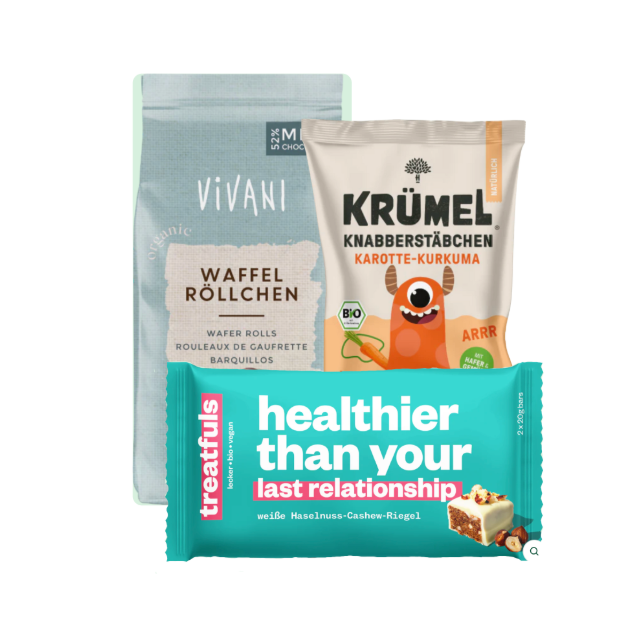Bread is one of those foods we eat almost daily – and just as often throw away too soon. But what does "shelf life" actually mean when it comes to bread? The shelf life of bread describes how long a loaf retains its typical freshness, flavor, and texture before it spoils or becomes moldy. How long bread keeps depends heavily on the type of bread, how it's stored, and also whether it's packaged, thawed, or even vacuum-sealed.
This article explains how long bread really keeps , how to tell fresh bread from spoiled bread , and how to store it optimally to avoid food waste. No matter what type of bread you have at home, you'll find all the answers you need about bread shelf life here.
How long does bread keep? – Differences between types of bread
The shelf life of bread depends heavily on the type of bread, its internal moisture content, and the crust. Generally speaking, the higher the water content and the softer the crumb, the shorter the bread's freshness. A hearty rye or sourdough loaf, therefore, keeps significantly longer than light wheat bread or rolls, which lose their freshness after just one day.
Guidelines for different types of bread:
- Rye and wholegrain bread: shelf life 5–7 days
- Wheat mixed bread: keeps for 3–5 days
- White bread and toast: keep for 2–3 days
- Bread rolls and pastries: keep for 1–2 days
-
Packaged bread: often stays fresh longer due to preservation, but once opened it only lasts a few days.
To keep bread fresh longer, it shouldn't be exposed to too much air or moisture. The crust protects a whole loaf, while cut slices dry out more quickly. Our tip: buy it whole and slice it only as needed.
Proper storage – the key to longer enjoyment
Proper storage determines whether your bread is hard after two days or still tastes fresh after five. Bread stays freshest at room temperature in a breathable environment – not in the refrigerator, where the starch degrades faster and the bread dries out.
Suitable places and containers for storage:
- 🏺 Bread box or bread bin made of ceramic or wood: keeps the moisture level balanced
- 🧺 Paper bag or cloth bag : ideal for short-term storage, bread can "breathe"
- ❌ Refrigerator : too cold, bread dries out faster
- 🌡️ Environment & Climate : In damp kitchens, ventilate more frequently to prevent mold growth.
Properly storing bread not only actively combats food waste, but also preserves the natural taste and quality of the bread.
How long does bread keep in a plastic bag?
While a plastic bag retains moisture and prevents bread from drying out, it quickly promotes mold growth. The damp environment inside provides microorganisms with an ideal breeding ground – a common problem, especially in summer.
If you wrap bread in plastic, please only do so briefly and when it's completely cooled. Plastic is only suitable for longer storage if the bread is frozen. Proper bread storage means keeping it as breathable as possible and preventing condensation to avoid mold.
H2: Freezing and thawing bread – this is how it stays fresh for longer
Freezing bread in portions keeps it fresh for weeks, effectively preventing food waste. Bread will keep for up to three months in the freezer – whether it's a whole loaf, individual slices, or leftovers.
Here's how to proceed step by step:
- Allow the bread to cool completely.
- Pack airtight in freezer bags or freezer containers.
- Slice as needed before freezing to allow for thawing of small quantities.
Room temperature is sufficient for defrosting; alternatively, the bread can be briefly baked in the oven or toaster – spraying on some water to reactivate the crust.
Thawed bread will keep for about 2-3 days.
Vacuum-sealing bread – does that extend its shelf life?
Vacuum sealing can indeed make bread last longer, as it removes the air and reduces the chances of microorganisms multiplying. In an airtight container or vacuum bag, bread stays fresh at room temperature for about a week, and in the refrigerator for up to two weeks.
However, this method only works if the bread is completely dry and cooled down – otherwise, condensation trapped in the vacuum can lead to mold growth. For those who want to store bread for a long time, freezing is the better option. It's the safest and gentlest solution.
How can you tell if bread is still good?
Whether a loaf of bread is still edible depends on the condition of its surface, its smell, and its taste.
- Appearance: White or green spots indicate mold – dispose of immediately!
- Smell: Musty or sour? Then the bread is most likely spoiled.
- Consistency: A moist, sticky crumb is a warning sign; if in doubt, throw it away.
-
Taste: If the bread tastes bitter or musty, do not eat it.
A loaf of bread that has gone stale isn't a problem, it's just dry. Moistening it with a little water and briefly baking it in the oven will soften it again. It's better to check it than to throw away good bread prematurely.
Is it safe to eat bread that is 4 days old?
Yes, in most cases, bread that is four days old is still perfectly safe to eat. As long as it doesn't have mold, a musty smell, or an altered taste, you can eat it without hesitation.
Dry slices of bread or a hard loaf of bread can easily be saved:
- Lightly moisten and bake in the oven for 5-10 minutes.
- Alternatively, toast them or turn them into croutons and casseroles.
This makes the crust crispy again, the crumb soft – and the bread tastes almost like it's freshly baked.
Creative ideas for using up leftover bread
Furthermore, many creative dishes can be prepared from leftover bread:
- French toast (soak bread in milk, egg and a little sugar, then fry until golden brown)
- Bread soup or bread casserole – ideal for hearty leftovers
- Bread dumplings or napkin dumplings made from stale white bread
- Bread chips made from thinly sliced, seasoned bread – perfect as a snack or soup garnish.
- Bread pudding as a sweet version with milk, eggs, raisins and cinnamon
This way, dry bread doesn't become waste, but the basis for new, delicious dishes – and you actively contribute to avoiding food waste .
Tips & tricks to make bread last longer
With a few simple tips and tricks, bread will keep significantly longer :
- Store bread correctly: Not in the refrigerator, but in a bread box or bread pot made of clay or ceramic.
- Cutting instructions: Always store with the cut edge facing down to prevent it from drying out.
- Separate loaves or slices: Whole loaves keep longer than sliced ones.
- Use up leftovers: Bread scraps can be used to make croutons, breadcrumbs or delicious casseroles.
- Moistening: A little water and heat will soften even old bread again.
Conclusion – Enjoy bread instead of wasting it
Whether it's a fresh loaf, baked rolls, or frozen pastries, knowing how long bread lasts can save you a lot of money and food. Pay attention to storage, check the condition , and get creative with leftover bread.
This way you reduce food waste, act with sustainability in mind and enjoy the best that bread can offer – taste, quality and conscious household management.



